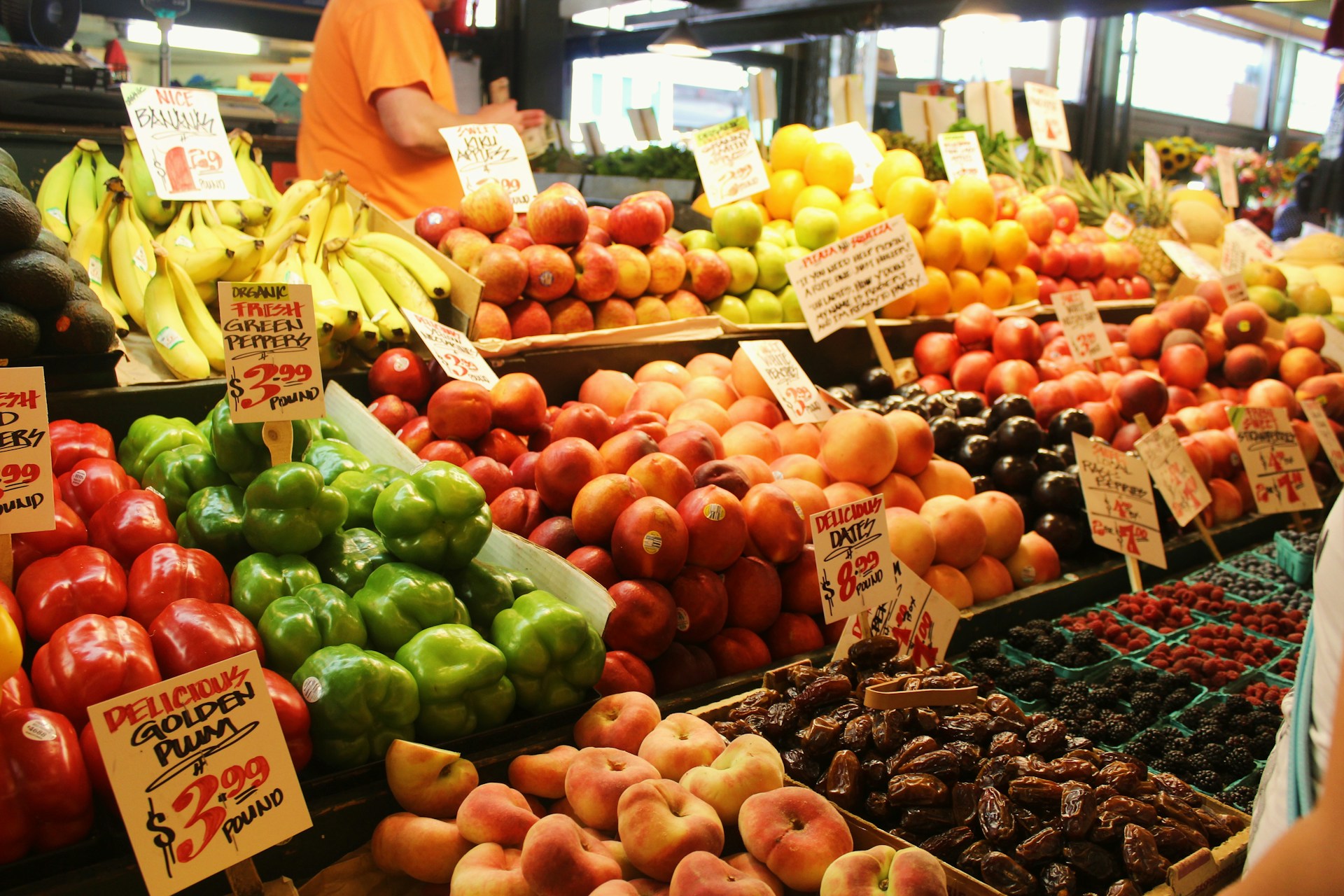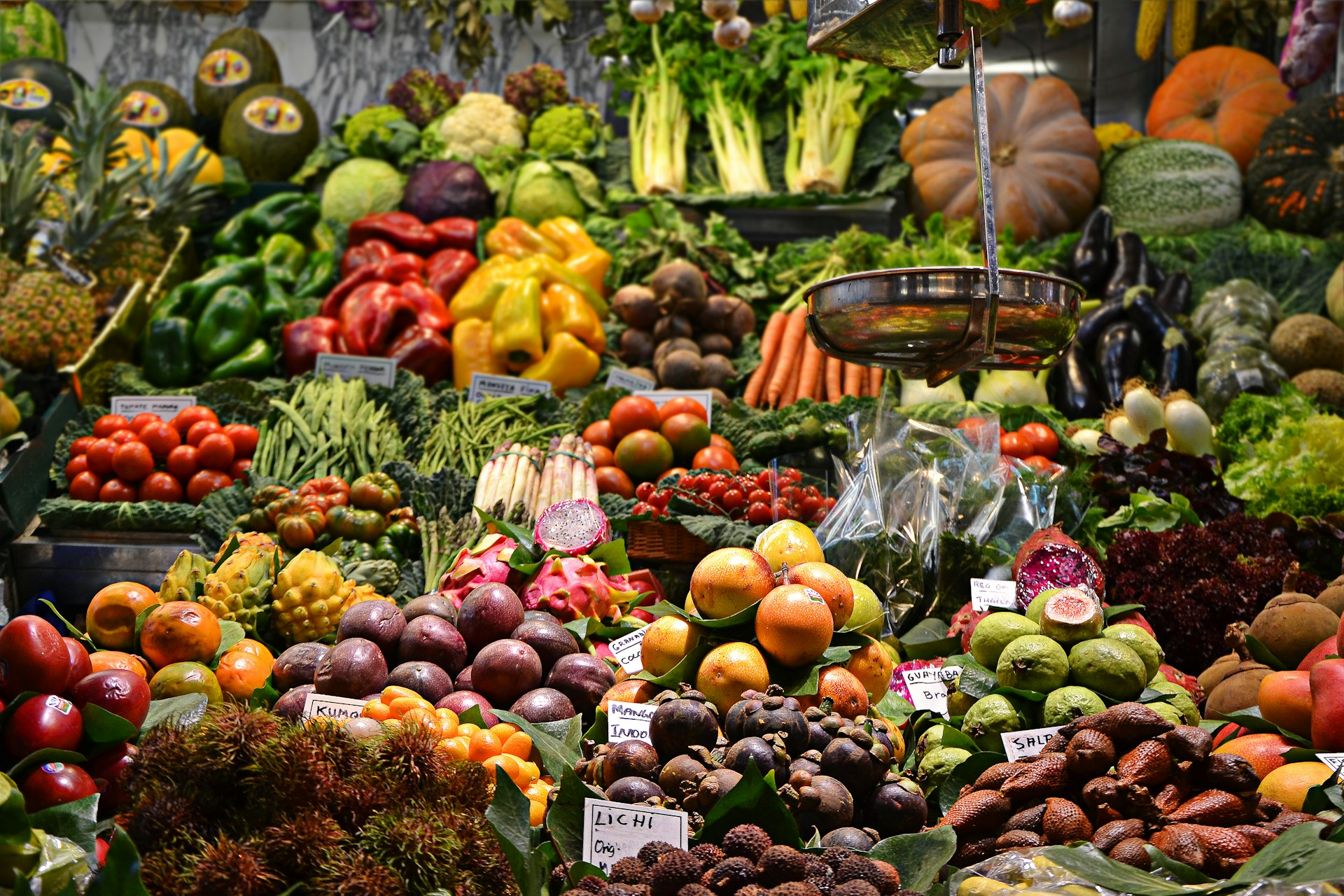As consumers become increasingly discerning, the importance of thoughtful pricing strategies for high-end packaged produce cannot be overstated.
In such a dynamic landscape, sellers must strike a balance between creating value and ensuring profitability.
This requires a keen understanding of market trends, consumer preferences, and competitors’ offerings.
Coupled with the need to represent perceived premium quality, this can become a complex task.
Therefore, adopting effective pricing techniques is essential.
In this article, we will explore how various strategies contribute to the successful sale of premium packaged produce.
Contents
Pricing Strategies For Premium Packaged Produce
1. Premium Pricing
When it comes to the pricing of premium packaged produce, the strategy employed can significantly impact the positioning of the brand in the market.
For a product to command a premium price, it generally has to offer some form of superior quality or value that justifies the higher price point.
Further, the product needs to be perceived as such by the consumer, and this perception can make or break the success of a premium pricing strategy.
Employing a premium pricing strategy effectively requires careful consideration of aspects such as the quality of the product, the positioning in the market, and the perception in the eyes of the consumer.
While other pricing strategies may focus on achieving sales volume or entering new markets, the primary goal of a premium pricing strategy is to achieve maximum profit for each unit sold.
This is often a suitable strategy for businesses with strong brand recognition and a loyal customer base willing to pay more for the perceived value.
They are generally able to afford the higher price because of the guaranteed quality, and because the product matches their lifestyle and personal image.
Premium pricing strategies can help a business develop a brand image of luxury and exclusivity, setting it apart from its competitors.
It signals that the product is of the highest quality and commands a price to match, thereby attracting a certain segment of consumers who seek out high-quality goods and services.
An added benefit of a premium pricing strategy is that it can generate higher profit margins, even at lower sales volumes.
This can be especially advantageous for small-scale producers of premium packaged produce, who may not have the scale to compete with larger producers on volume, but can compete on quality and exclusivity.
However, a premium pricing strategy can also have its challenges.
For example, businesses must ensure that the product truly offers exceptional value to justify the higher price.
Furthermore, this strategy can limit the reach of the product to a smaller, more selective market.
In any case, employ a premium pricing strategy must be taken with careful, calculated decisions.
Overall, premium pricing strategy, when done successfully, can help businesses sell their premium packaged produce at a higher price point, thereby increasing their profitability and establishing their brand as a luxury, high-quality option.
2. Psychological Pricing
The concept of psychological pricing refers to a strategic way to price products or services to influence consumers’ perception towards them.
Often, this involves setting prices that have a significant psychological impact, like pricing an item at $9.99 instead of $10.00.
This technique is grounded in the belief that customers will perceive these pricings as being significantly lower.
Psychological pricing is a prevalent strategy used in various kinds of businesses, including premium packaged produce.
Utilizing psychological pricing allows businesses to associate their items with a certain level of quality or uniqueness, while still appearing affordable to the consumer.
Consider using this strategy when pricing premium packaged produce, taking note of how the price point might affect the perceived value of the product.
Sometimes, the difference of a few cents could make all the difference, increasing the perceived value of your product without significantly impacting the cost.
Psychological pricing can potentially lead to an increase in sales, but it is essential to use it cautiously as it can backfire if overused.
It’s also vital to remember that while psychological pricing can influence purchasing decisions, it is one of many factors that consumers consider.
The strategy should always be backed by high-quality products and excellent customer service.
The packaging, labeling and marketing efforts all play a critical role in creating a perception of value, which then legitimizes the price point in the customer’s mind.
It’s also essential to ensure the price point is sustainable and profitable for the business.
When implemented thoughtfully and strategically, psychological pricing can be a potent tool for businesses to maximize their profitability while appealing to the psychological tendencies of their consumers.
Ultimately, the goal of psychological pricing is to increase sales and generate perceived value without negatively impacting profitability.
In the context of premium packaged produce, careful use of this strategy can mean the difference between product stagnation and significant growth.
3. Bundle Pricing
The concept of bundle pricing can be an effective strategy when selling premium packaged produce.
This method involves selling multiple products together at a cost lower than if the customer were to purchase each item separately.
The key to successful bundle pricing lies in carefully selecting products that complement each other.
For example, a produce distributor might sell a bundle of organic fruits and vegetables, catering to consumers seeking healthier food options.
This not only enhances the perceived value of the bundle, but it might also encourage buyers to try new products that they would not have purchased individually.
Bundle pricing can be particularly useful in the produce sector for generating a higher volume of sales.
Customers perceive they are getting a bargain, and in turn, might purchase more than they initially intended.
This results in increased average transaction values for the business.
Furthermore, bundling can be an excellent way to sell-off surplus stock without significantly reducing the individual product price.
This can be especially beneficial for premium packaged produce, which often has a shorter shelf life compared to other packaged products.
However, it’s essential to be aware that while bundle pricing can boost sales, it might also lead to a decrease in profit margins if not implemented strategically.
Therefore, assessing the cost-effectiveness and potential impact on profitability before implementing a bundle pricing strategy is crucial.
Likewise, it’s important to consider the perceived value of the bundle to the customer.
If customers believe they are getting a worthy deal, they are more likely to be satisfied with their purchase, therefore, enhancing customer loyalty and lifetime value.
In short, bundle pricing is a strategic way to increase sales, enhance customer perceived value, and potentially boost profitability for premium packaged produce companies.
4. Skimming Pricing
For companies with premium packaged produce, a skimming pricing strategy can be an effective approach.
At its core, skimming pricing involves introducing a product at a high price and gradually decreasing the price over time.
This method is particularly suitable for high-quality, premium products that have a distinct competitive advantage or unique selling proposition.
Initially, the high price helps to maximize revenue from those consumers who are eager to pay more to have the product first.
Skimming pricing not only allows companies to recover their costs quickly but also creates a high-quality image of the product.
The exclusivity developed through high initial pricing often boosts the perceived value of the product.
Consumers perceive that a product is of superior quality if it is highly priced.
As the price of a product decreases over time, it becomes accessible to a broader customer base, increasing market share.
Setting a high initial price necessitates significant market research to ensure that there is a ready market segment willing to buy the product at the higher price.
Companies need to understand the customers’ willingness to pay and the perceived value of the product.
Implementing skimming pricing requires precise timing – the price should be reduced at the right time to attract a larger market share before competitors enter the market.
A significant risk associated with skimming pricing is that it attracts competition.
Once competitors see the high margins, they may be tempted to enter the market with similar products at lower prices.
Therefore, skimming pricing is most effective for products that have patent protection or significant barriers to entry.
Despite the potential downsides, for premium packaged produce, skimming pricing offers an effective strategy for companies looking to build brand value and maximize early revenues.
5. Penetration Pricing
The penetration pricing strategy is often employed when a new product is introduced in the market.
This method involves setting the initial price low to attract customers and gain market share quickly.
The low pricing aims to penetrate the market swiftly before competitors can react.
In the context of premium packaged produce, this strategy can be very effective.
Premium produce often comes with a higher price tag due to the quality and attention to detail ingrained in the production process.
However, using a penetration pricing strategy allows a business to offer premium packaged produce at a reduced cost to encourage trial and generate buzz about the product.
Once consumers experience the quality of the produce and value for money, brand loyalty can develop, providing a solid customer base once prices normalize.
While the short-term profits might be lower during the initial penetration phase, the long-term gains in terms of market share and brand recognition can be substantial.
Having garnered a customer base, the company can then gradually increase the price to reflect the premium nature of the product.
A crucial aspect of this strategy is to justify the subsequent price increase by continuously delivering high-quality produce that offers value to the consumer.
In terms of the packaged produce industry, companies selling organic, sustainably sourced, artisanal, or other higher-end products can use penetration pricing to gain a foothold in an increasingly competitive market.
Penetration pricing attracts customers not just with the lower price but also with the apparent value the product offers.
This pricing strategy, while beneficial in getting a foot in the door of a market, requires careful planning and execution.
It is crucial to ensure that the business can sustain lower initial profits and to have a solid plan for gradually increasing prices without alienating the newly acquired customer base.
Ultimately, penetration pricing can be a potent tool for businesses launching premium packaged produce, offering a pathway to rapid market penetration, customer acquisition, and brand loyalty building.
6. Economy Pricing
When discussing pricing strategies for premium packaged produce, Economy Pricing can present a unique angle within the market.
Although premium goods usually carry a higher price, Economy Pricing can have its place in creating a balanced product offering.
In some cases, buyers are seeking high-quality produce, yet remain sensitive to price, which is where Economy Pricing can effectively come into play.
This strategy tends to revolve around the notion of offering lower prices to attract cost-conscious consumers.
In practice, the use of Economy Pricing manifests in the form of bulk purchases or ‘value packs’ that offer a greater volume of product for a lower per-item cost.
A robust Economy Pricing strategy requires a focus on minimizing costs as well, to maintain profitability.
Firms can achieve this through economies of scale, optimizing supply chain efficiency, or by sourcing lower-cost ingredients without compromising the quality of the final product.
Contrarily, several brands use Economy Pricing as a temporary strategy during the introductory phase of a new product.
This not only stimulates trial purchases but also helps in building a solid customer base before the product graduates to a more standard, and possibly higher, pricing tier.
In the realm of premium packaged produce, this strategy would involve pricing new high-quality products at a lower introductory price, with the aim of enticing potential consumers and increasing market penetration.
It’s essential to understand the role of perception when employing an Economy Pricing strategy within a premium product context.
The perception of quality is critical to the success of premium products and thus, the product must still convey a sense of high-quality and value, even if priced at a lower point.
To effectively rope in Economy Pricing within the premium produce segment, firms must therefore maintain a balance between cost-cutting and preserving product quality.
Striking this balance, while challenging, can lead to a successful strategy that draws in new cost-conscious consumers without alienating current consumers who appreciate the premium quality of the product.
Thus, while Economy Pricing is often seen as the antithesis of premium pricing, it can be a powerful tool when used strategically in the premium packaged produce market.
7. Promotional Pricing
As part of a broader pricing strategy for premium packaged produce, promotional pricing can be a potent tool at both the wholesale and retail levels.
Promotional pricing involves temporarily reducing the price of a product in order to stimulate sales and increase market share.
This strategy must be used wisely, as it could lead to a decrease in profit margins, especially when dealing with premium packaged produce.
Typically, promotional pricing is employed during a specific time frame like seasonal sales, new product launches, or events.
As with any pricing strategy, careful planning and thought are required in the implementation of promotional pricing.
The key is to use promotional pricing to enhance the perceived value of the premium packaged produce without compromising its high quality and luxury image.
Examples of promotional pricing can include coupon campaigns, flash sales, buy one get one free (BOGOF) deals, or percentage discounts.
Moreover, promotional pricing can be a way to clear stocks of certain products, especially perishable commodities like fresh produce.
When implementing promotional pricing, it is crucial to communicate the promo clearly to customers, to prevent any misunderstandings that might lead to customer dissatisfaction.
Additionally, attention should be given to how promotional pricing can affect the price elasticity of demand for the product.
Producers or retailers might employ a loss-leader pricing strategy, selling a product below its market cost to attract customers.
This tactic is often used in tandem with promotional pricing, especially during significant sales events like Black Friday or end-of-season sales.
Promotional pricing should not become the norm, as it can lead to a value erosion of the product over time.
To avoid this, it is suggested to combine promotional pricing with other strategies like premium pricing or value-based pricing.
In doing so, you can maintain the high-end image and quality of the premium packaged produce while still offering occasional promotions to drive sales and customer acquisition.
In conclusion, while promotional pricing is a powerful tool in a marketer’s arsenal, it should be employed with care and consideration for the overall brand positioning and market competition.
8. Value-based Pricing
Value-based pricing is a strategy that determines the price of a product or service based on its perceived value to the customer, rather than the cost of production or the prices of competing products.
This pricing strategy can be highly effective when applied to premium packaged produce in particular, as the quality and unique attributes of these products often hold a significant perceived value to customers.
Under this strategy, the key is to understand the customer’s perception of value.
This understanding could be derived from direct interactions with the customers, market research, or other methodologies tailored to the specific customer base of the premium packaged produce.
Once the value perceived by the customer is understood, the business can then set a price that corresponds to this value.
It’s essential to note, price higher than the perceived value will likely drive customers away, while a price less than the perceived value could lead to profits left on the table.
The customer’s perception of value for premium packaged produce could include certain attributes such as organic ingredients, ethical sourcing, gourmet quality, brand prestige, unique flavors, stringent quality control, or superior packaging.
It is important, therefore, for businesses to not only cultivate these value-adding attributes for their products but also to effectively communicate these attributes to their target customers.
In cases where customers highly value these attributes, they might be more willing to pay a premium price for the produce.
Another aspect to consider in this strategy is how the pricing and value perception align with the overall brand positioning in the market.
If the products are positioned as high-quality, premium offerings, it would be in alignment with a higher price point based on perceived value.
This positions the premium packaged produce as a more desirable and exclusive product compared to its competitors, which could, in turn, enhance the customer’s overall perceived value of the product.
When effectively implemented, value-based pricing can lead to increased customer loyalty and satisfaction as customers feel they are getting their money’s worth, and could even become brand advocates recommending the product to others.
It can provide a competitive edge in markets where customers are willing to pay more for products they perceive as having high quality or unique attributes.
Value-based pricing, when applied to premium packaged produce, can be a powerful tool for both driving profitability and creating a valued position in the minds of customers.
9. Geographic Pricing
In the realm of pricing strategies for premium packaged produce, a significant consideration is geographic pricing.
This approach entails setting prices based on the geographic location of the customers, factoring in transport costs, market conditions, and competition levels in specific areas.
Many times, businesses that offer premium packaged produce have to deal with higher distribution costs in certain regions.
In such scenarios, geographic pricing can be an effective way to maintain profitability while still reaching out to customers in far-flung areas.
For example, a company selling premium organic fruits in a city might have to charge higher prices if it wants to offer the same products to customers in a rural area with poor transport infrastructure.
On the other hand, offering the same price might result in a loss due to the increased logistics cost.
For economically,geographic pricing can benefit both the seller and the consumer.
A tailored pricing model allows companies to offer competitive pricing based on the purchasing power of specific regions or cities.
Richer cities with greater purchasing power are generally willing to pay a premium for high-quality, organic produce, contributing to higher profit margins.
On the other hand, in less affluent areas, a lower pricing strategy can attract more consumers while maintaining a healthy margin.
It is crucial to remember that this pricing strategy must comply with local regulations and laws.
Some countries might have laws against discriminatory pricing based on location.
There also needs to be a balance in this pricing strategy; excessive pricing differences might lead to perceived inequality among customers, which could impact a business’s reputation negatively.
As part of the geographic pricing strategy, proper market research is necessary to understand regional economic standards, competition level, customer preferences, and applicable laws.
Ongoing market analysis and competitive intelligence are essential to optimize and adapt this pricing model over time, addressing changes in market dynamics.
The key to success with geographic pricing is a clear understanding of the micro and macroeconomic factors influencing consumer behavior and product accessibility in each geographical area.
.10. Price Discrimination
In the world of premium packaged produce, Price Discrimination can play a crucial role in determining the prevailing pricing strategy.
This practice involves the variation of prices for different types or segments of customers.
It is not necessarily based on the cost of production, rather on the consumer’s willingness and ability to pay for a product.
This strategy allows sellers to maximize their profits by capturing as much consumer surplus as possible.
Essentially, this approach translates to selling the same product at different prices to different consumer segments.
Price Discrimination ensures the producer captures a larger share of total economic surplus by matching price points with consumers’ exact willingness to pay.
Understanding the economic conditions, purchasing power, and preferences of different consumer groups is therefore paramount to effectively implementing this pricing strategy.
However, this type of pricing strategy requires an in-depth knowledge of your market and customer segmentation, which can be difficult to acquire.
Furthermore, there are several types of Price Discrimination, First Degree, Second Degree, and Third Degree, each differing in approach and execution.
In the food industry, particularly premium packaged produce, understanding and implementing these types of price discrimination can lead to increased profits and market success.
First Degree price discrimination, also known as perfect price discrimination, involves individualized pricing, where the seller charges each buyer their maximum willingness to pay.
Second Degree price discrimination involves pricing based on the quantity purchased, offering discounts for bulk purchases.
Third Degree price discrimination is based on market segmentation, with prices varying based on factors such as demographics, location, behavior, or economic status.
For instance, selling a premium packaged salad at a higher price in an upscale supermarket in the city, as opposed to a lower price in a rural store, is an example of Third Degree price discrimination.
Remember, though, while this strategy can lead to larger profit margins, it must be executed carefully to ensure legal compliance and avoid potential backlash from customers.
Navigating these facets of Price Discrimination can be complex, but if done right, it can significantly boost your profitability in the premium packaged produce market.
The Bottom Line
The strategy for pricing products holds significance in the market to maintain a competitive edge.
Premium, psychological, and bundle pricing helps establish uniqueness, tap consumer mindsets, and mutual benefits.
The skimming, penetration, and economy pricing play vital roles in the initial product launch, market capturing, and attracting the budget-conscious population.
Promotional, value-based, and geographic pricing offers strategies to boost sales, build customer loyalty, and manage cost variations across locations.
Having the flexibility of price discrimination allows businesses to capitalize on market conditions and consumer willingness.
Choosing the perfect blend of pricing strategies benefits the business tremendously regarding profitability, customer retention, and market dominance.




